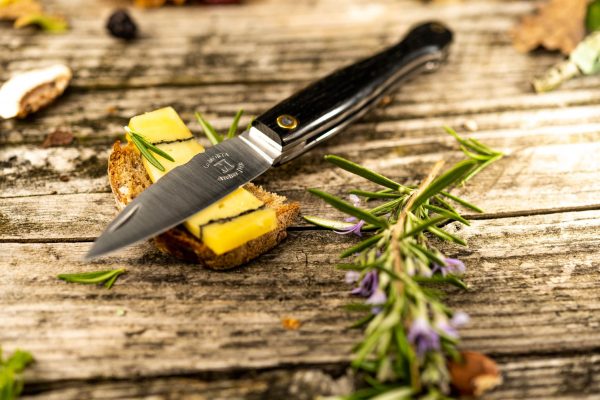As the sun casts its first rays, you feel the crunch of leaves underfoot. Dew glistens on every stem, awakening each bud. The day promises to be beautiful. Along a trail, brambles catch your eye, eventually leading you to spot henbit or a dandelion. Mother Nature offers her aromatic and fruity riches for the taking — you just need to gather them! Edible wild plants are bursting with nutrients, flavors, and colors to enhance your dishes. Let’s go on a hike to appreciate all their therapeutic benefits without forgetting the simple joy of discovery.
Edible plants: Nature’s generous bounty
A reconnection to nature and simple pleasures
Why choose a wild plant over supermarket produce?
There are plenty of reasons:
– Free aromatic herbs;
– The joy of discovering a natural treasure and proudly placing it on your plate;
– The taste of local cuisine;
– The excitement of trying new gourmet recipes;
– The perfect excuse for beautiful forest walks;
– Rediscovering your local ecosystem;
– The opportunity to share your knowledge of phytotherapy, botany, or culinary arts with loved ones;
– The authenticity of the moment;
– The peace of not having to queue up to pick nettles;
– Last but not least: the connection to beloved Mother Nature.
Isn’t this a tangible approach to epicureanism?
At Morta Knives, we have one more argument. Healthy greens, trust us, are a solid excuse to indulge in a high-quality artisanal sausage. If you can find good charcuterie at your local deli, please, avoid the wilted lettuces of supermarkets, even if they’re branded as “eco-citizen, sustainable” sections.
What does it mean to be flexitarian? It means eating meat, but not all the time 😎. There you go!
Anyway, let’s get back to our chlorophyll considerations, promise, there’s fun to be had outside.
Biodiversity for sustainable nutrition
The ecological approach to food recommends eating organic, local, and seasonal. Three words that beautifully summarize the gathering of edible wild plants.
The Unesco Chair site reminds us that ecology means “science of relationships.“
Eating well builds a connection:
– To oneself, as we take care of our health;
– To others, through shared meals;
– To the biosphere via food landscapes or the microbiome.
WWF encourages flexitarian eating. Between vegetarian and carnivore, nutritional balance is found in quality products chosen by an informed and thoughtful consumer. On the plate, this translates into vegetables, fruits, and other condiments that are local and seasonal.
4 edible wild plants with therapeutic benefits
Dandelion for Vitality
How to find and cook dandelions?
Dandelions grow in meadows or fields, sometimes along paths. Their leaves are rich in vitamin C and delicious in salads or as a side vegetable. The floral buds enhance marinades. The flowers make good wine. Some dry and grind the roots, then brew them to create a bitter-tasting beverage, similar to coffee but caffeine-free.
🔪 Pull up the dandelion, creating a hole around the root with the blade of your knife.
The benefits of dandelion
A powerful tonic, the dandelion plant cleanses the blood. Its virtues are dietary and digestive. It stimulates bile secretion and wakes up the body.
It’s recommended for a spring cure, pressed into juice, taking one to two tablespoons in the morning.
For this, mix 50% leaves and 50% roots. Repeating this process annually eases the pains of arthritis and rheumatism.
Nettle for Vitamin C
The nutrients in nettle
Don’t be deterred by its stinging effect; nettle is perfectly edible after some simple preparations. The rhizome, the underground stem that bears the roots, contains natural carbohydrates (polysaccharides). It is also rich in proteins (up to 40% of its dry weight in spring) and amino acids. 100 grams of nettles contain 300 grams of vitamin C, three times more than oranges. Richer in iron than spinach (take that, Popeye), nettle also contains calcium and provitamin A.
Ideal for vegetarians and flexitarians to compensate for meat consumption.
🔪 Harvest nettle with gloves at the base of the stem.
The benefits of nettle
According to passeportsanté, nettle fights inflammation of the urinary tract and kidney stones. As a dietary supplement, nettle eases urination difficulties related to benign prostatic hyperplasia. As a poultice, it relieves the pains of osteoarthritis or rheumatism.
Blackberry or wild mulberry for sweet pleasures
How to find and cook blackberry?
Fear not, you know common brambles by a much more appetizing name: the wild mulberry. A shrub with flexible, thorny branches, it nestles in ditches, along paths, and at the edge of woods.
The fruits are enjoyed in pies, jellies, jams, syrups, wine, vinegar, and liqueur.
Brighten up your salads with blackberry flower petals, yes, the flowers are edible.
The leaves are consumed as an infusion. Slightly fermented, they give a stronger taste (rather like black tea). Simply pile them up and let them wilt in the shade at between 25 and 40° C. After a few days, when the color darkens, you can air-dry the leaves in a dry place.
😉 Clever idea: use bramble leaves to smoke meat or fish.
🔪 Weed (pull out the roots) with a knife to pick bramble.
Did you know? Blackberries and raspberries are derivatives of brambles.
The benefits of bramble
The leaves of the wild mulberry, or R. caesius, have phytotherapeutic virtues very similar to those of the raspberry. They are astringent and diuretic. Their leaves treat certain menstrual disorders. They soothe mouth and throat irritations.
Applied to a wound, bramble leaf accelerates healing. Beware, however, of the risk of infection, and always clean the wound thoroughly.
The leaves used in gargles or mouthwashes relieve:
– Tonsillitis;
– Gingivitis;
– Pharyngitis;
– Laryngitis;
– Dental neuralgia.
To make the decoction, boil a handful of leaves in a liter of water.
Violet for its color and flavor
How to find and cook violet?
You’ll find it in the understory, in semi-shaded exposures, along the edges of plant beds or shrub borders.
Cooked, it adds substance to soups or sauces.
Very tasty, it enhances dishes such as stuffings, gratins, and quiches.
Its beautiful namesake color makes it an attractive decorative element in salads of raw vegetables or potatoes, as well as fruit salads. Placed as a final touch, it elevates a cocktail.
It’s also gladly added to a cheese platter.
The benefits of violet
Like all plants in the violaceae family, the flowers and leaves of the violet are beneficial to health.
- Expectorant, they loosen mucus, relieve congestion, and clear the respiratory pathways. The fragrant violet eases mild broncho-pulmonary afflictions (light coughs, colds).
- Sudorific, they promote sweating (advisable in case of fever).
- Calming, they aid in falling asleep.
- Emollient, they relax and loosen what reduces rheumatic pains.
- Emetic (inducing vomiting), they soothe some symptoms of indigestion or mild poisonings.
In external use, Doctissimo attributes virtues against nervousness, stress, and insomnia.
3 simple and tasty recipe ideas using wild plants
Spring salad with dandelions
Craving a fresh salad for a natural, organic diet? Start with a walk outdoors. Back at your stove (which you won’t actually need), get out your cutting board and your best paring knife.
Prepare:
🍃 1 beautiful dandelion root;
🍃 75 ml of olive oil;
🍃 1 or 2 shallots;
🍃 2 slices of bacon;
🍃 3 tablespoons of red vinegar;
🍃 A bit of salt, sorry, fleur de sel from Guérande 😉, and pepper.
Arrange everything beautifully on a plate, and it’s ready.
Whenever possible, opt for organic ingredients (condiments, aromatic herbs).
Smart idea 😉
Cut dandelion leaves into chiffonade to incorporate them into a sandwich or to pair with AOC goat cheese.
Nettle vinaigrette all year round
Is your salad looking a bit sad? Why not jazz it up with a homemade vinaigrette?
🍃 Rinse your nettle harvest (it already loses a bit of its sting).
🍃 Chop the leaves by hand or in an electric mill to reduce them to pesto.
🍃 Mix your preparation into your usual oil. The nettle must soak up as much sauce as possible to no longer sting.
🍃 Add a little pepper and salt.
And voila! Your plate of crudités is transformed.
Multi-function violet syrup
Tired of the same old lemonade or industrial syrup? Don’t panic, violet is here.
🍃 Place the picked flowers in a saucepan, cover with water, and bring to a boil.
🍃 Turn off the heat, cover, let cool for 1 to 2 hours, and strain.
🍃 Add a bit of sugar and boil again.
🍃 Pour into sterilized bottles, close them, turn them upside down for 10 minutes.
🍃 Turn them right side up and store. The syrup keeps for several years.
You can use it in cocktails, on your desserts: panna cotta or fruit salad.
Smart idea 😉
Decorate your savory salads with a drizzle of violet syrup.
Violet syrup recipe proposed by The Path of Nature.
Spring wild plants: The 8 easiest vegetables to forage
The calendar declares the official start of spring on March 21. In our Western countries, Mother Nature awakens as early as February. Sap rises, ground water seeps into tree roots. Young shoots and flowers bloom. Birds chirp (but that’s another subject 😉).
– Dandelion: Yellow flower with jagged leaves (from mid-April to mid-May). Note that a second blooming is possible in autumn.
– Fragrant violet: We cook its flowers into candies or syrup. The leaf is eaten raw in spring (from March to May). Later in the year, it is advised to cook it, as it hardens.
– Flowering tops of white dead-nettle (to be picked in flowers).
– Purple dead-nettle (family of Lamiaceae), whose most tender parts are the heads (raw, cooked in velouté, or pan-fried to make chips for appetizers).
– Head of cleavers (Galium aparine) family of Rubiaceae. We like its taste of small peas. It is eaten in soup, juice, puree with apples and carrots).
– Cowslip or primrose (Primula veris). Its leaves are enjoyed in salad or soup. Its flowers, in infusion, flavor a dessert cream.
– Hairy bittercress (Cardamine hirsuta) tastes like watercress (hence its nickname cressonnette). Leaves, stems, flowers, young fruits accompany a salad or a cheese.
– Thistle (field thistle or Cirsium vulgare). It is picked at the very beginning of spring before it becomes prickly.
Gathering wild plants: safety instructions
Here is a non-exhaustive list of precautions to take before foraging and consuming a wild plant that could prove toxic.
In general,
– Only pick a plant if you are 100% sure of its identification.
– Think of biodiversity and harvest less than 10% of the available quantity. We’re talking responsible foraging, not wild harvesting.
– Avoid areas treated with pesticides, herbicides, fungicides, or other chemical fertilizers, polluted sites (roadside, former dumps), and grazing areas (animal droppings can carry bacteria).
As a precaution, avoid:
– Plants with umbrella-shaped flowers;
– Plants with thorns;
– Plants with shiny leaves;
– Plants with yellow, white, or red berries.
If in doubt, abstain. Never swallow a plant you do not know perfectly.
It is strongly advised to be well informed before engaging in foraging. Books and videos abound for a better understanding of plants. For the most avid foragers, methods based on identification keys help avoid the trap of believing that a plant is recognized by an image alone. Here, it involves an objective and precise questionnaire. The tela-botanica platform offers MOOCs for all levels.
Outdoor culinary pleasures are organized around a picnic with friends or solo, by the fireside after a long day of walking. Enhancing your dishes with edible wild plants strengthens this unique connection to Nature with a capital N. A few steps into the forest or countryside, and your entire family benefits from the flora’s health benefits.
I’m gearing up for my foraging.
Article penned by the sharp quill of Christelle Lorant 🪶.








